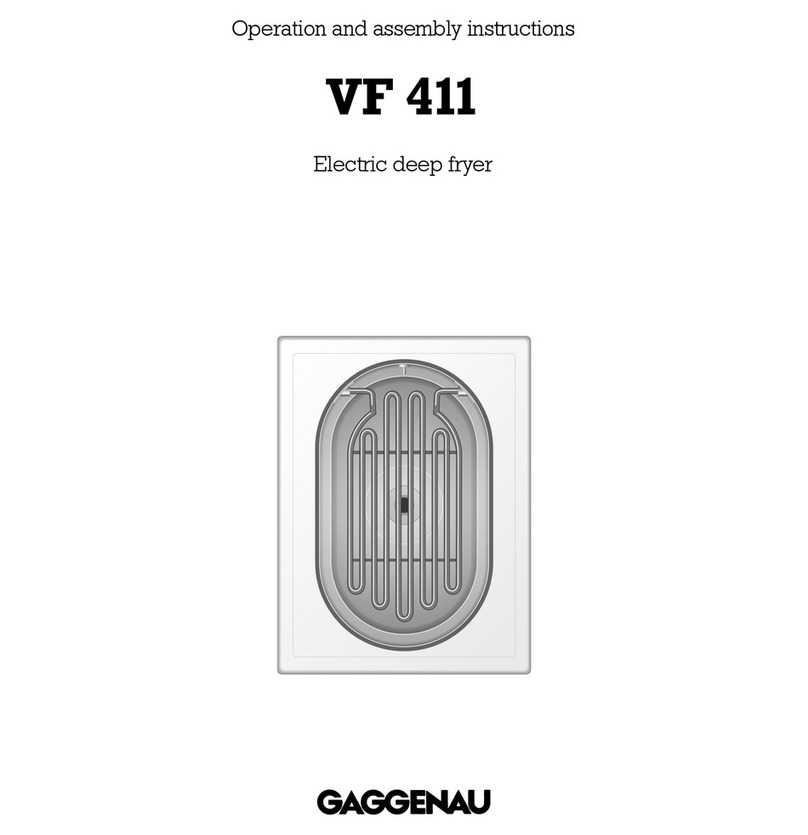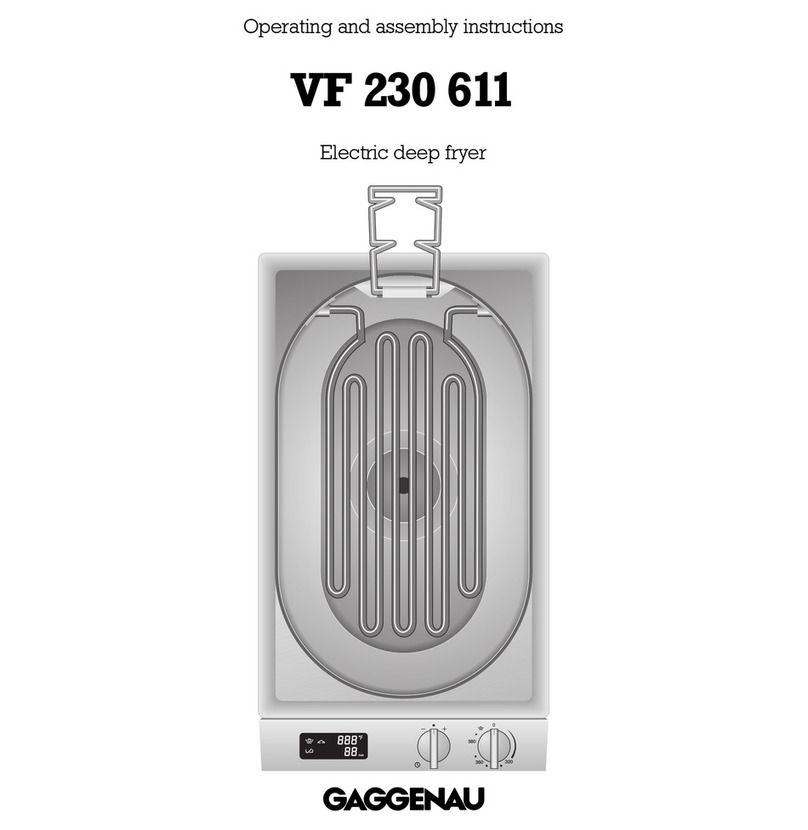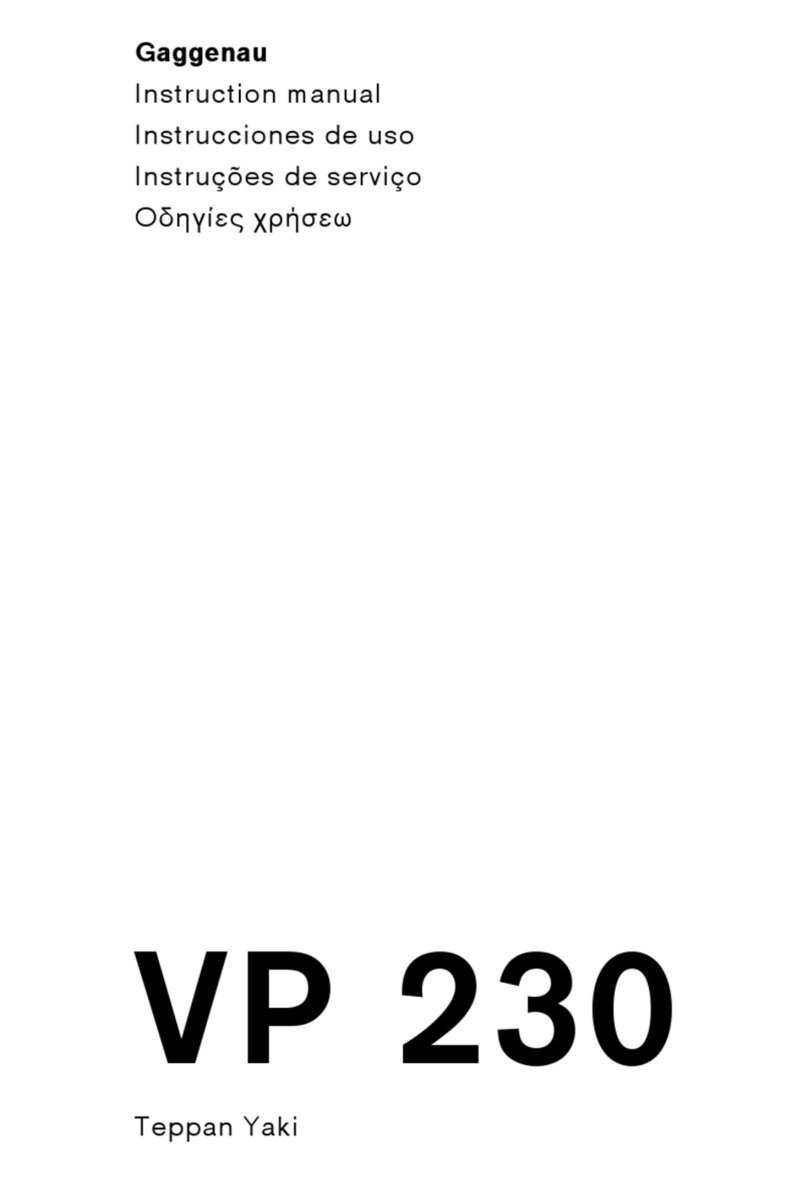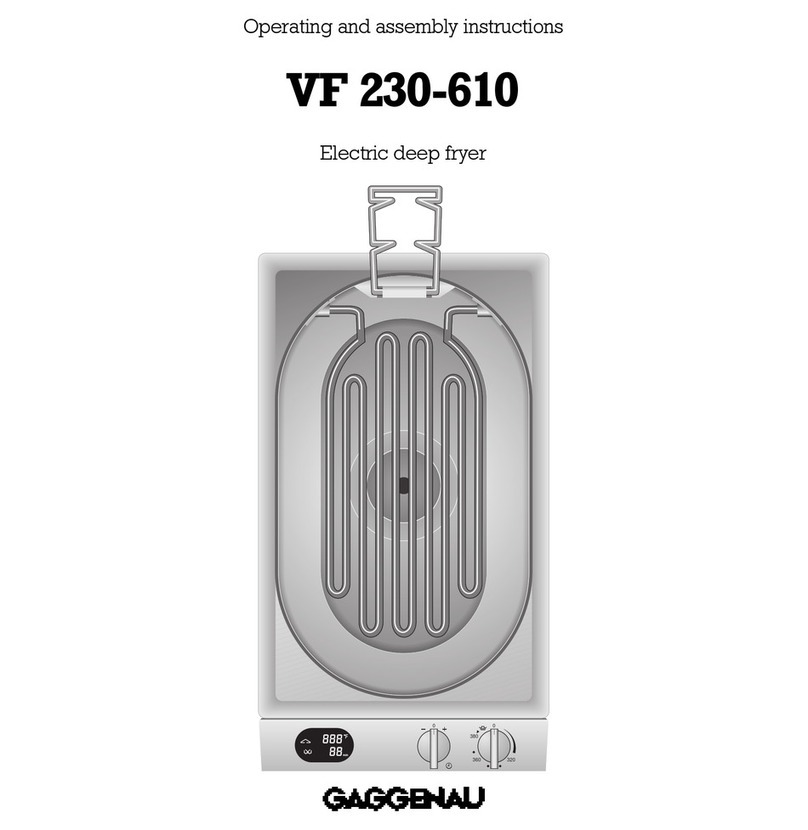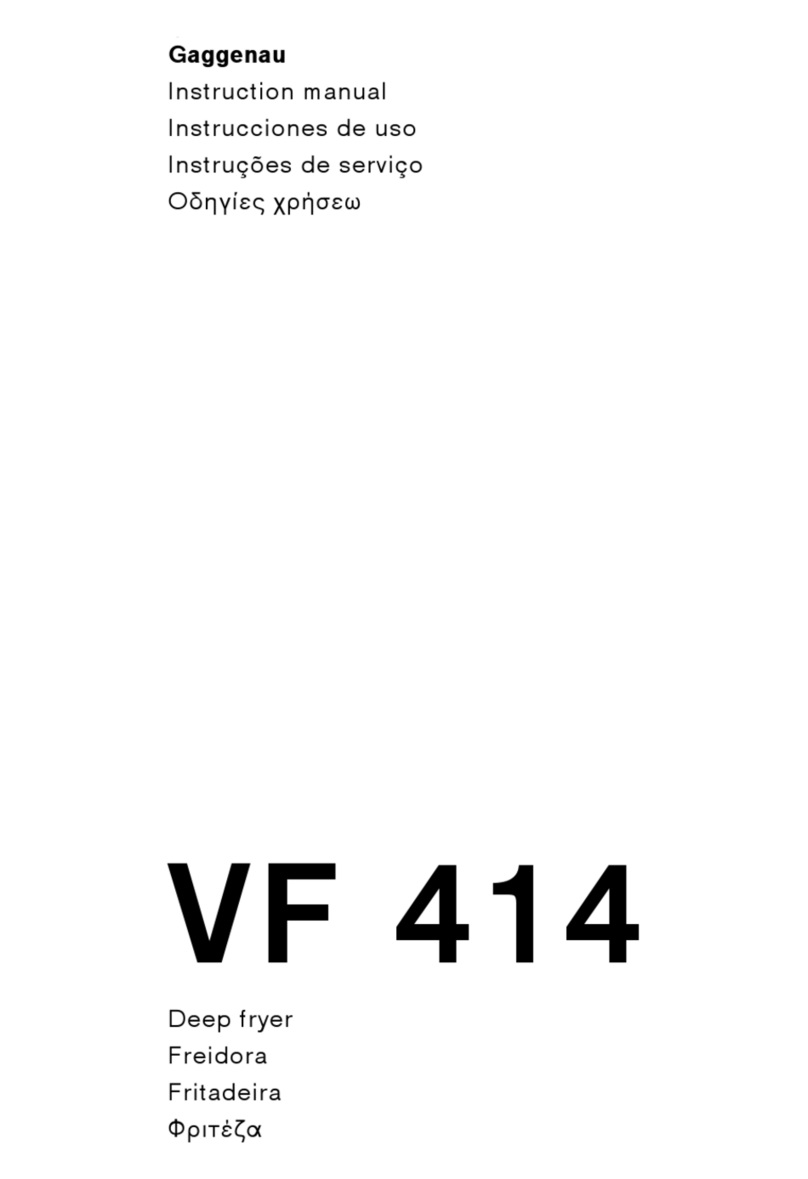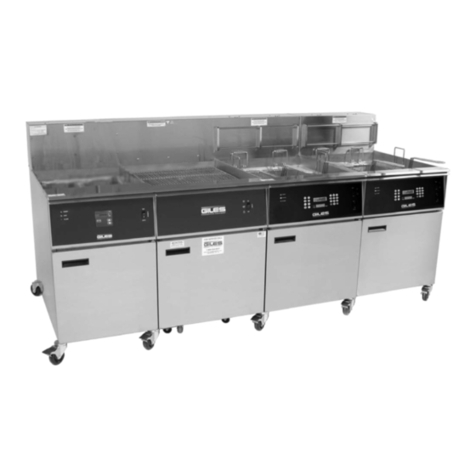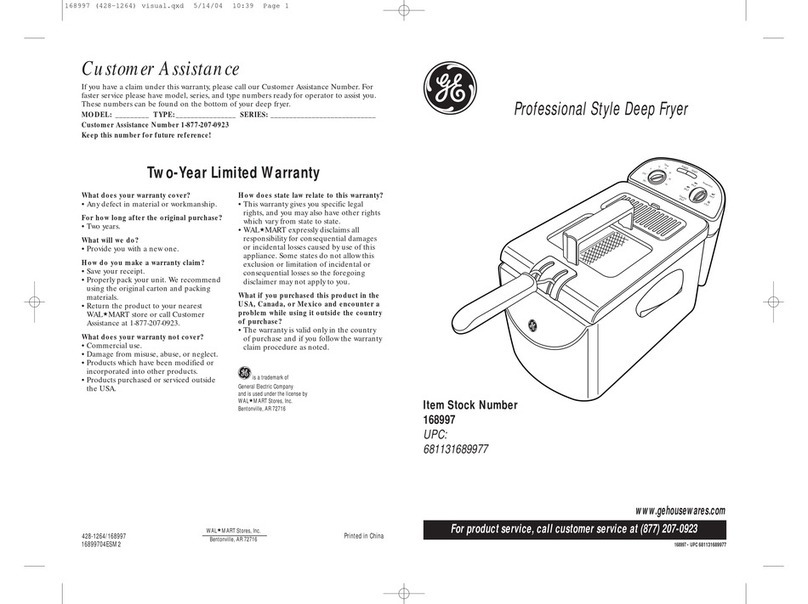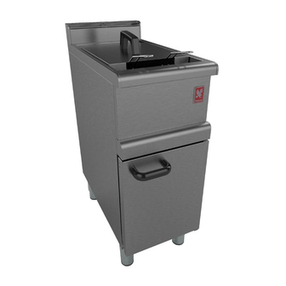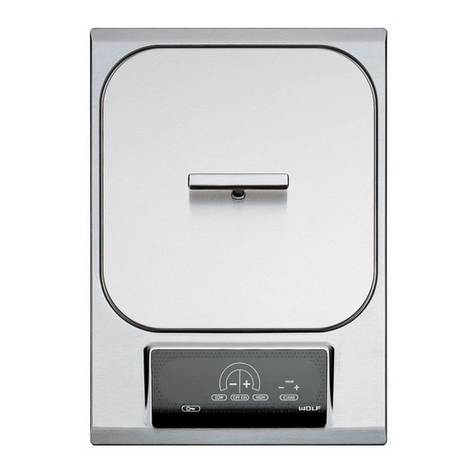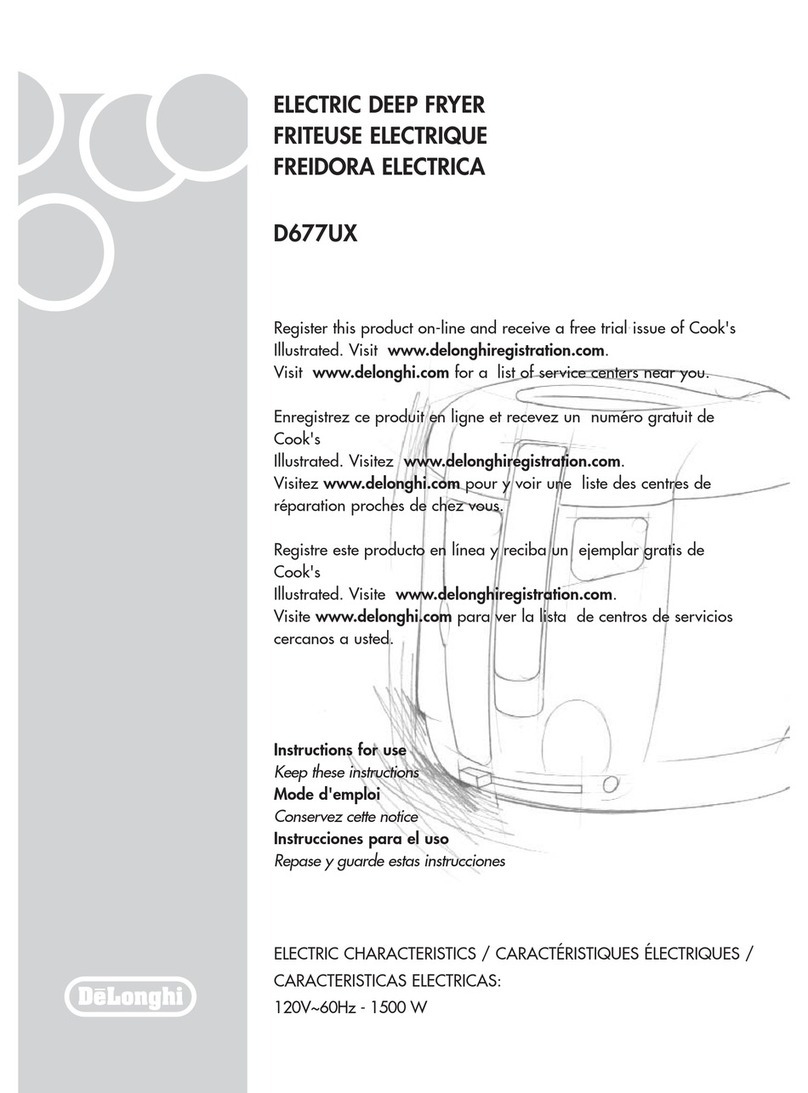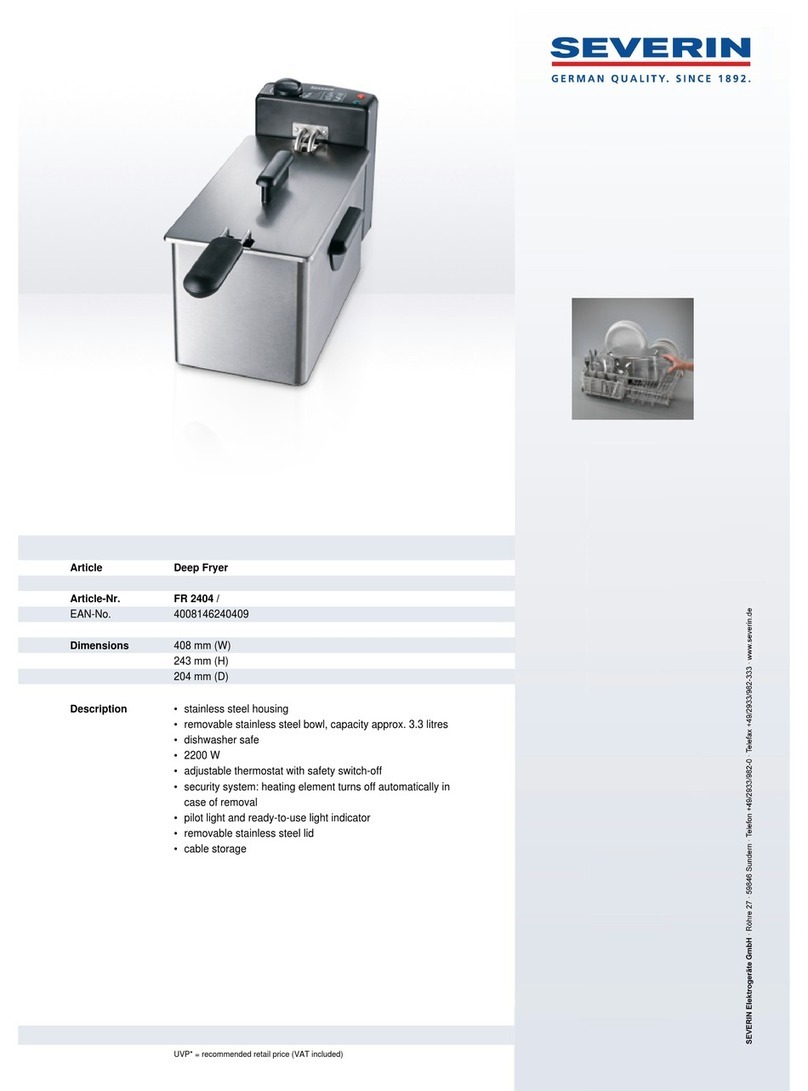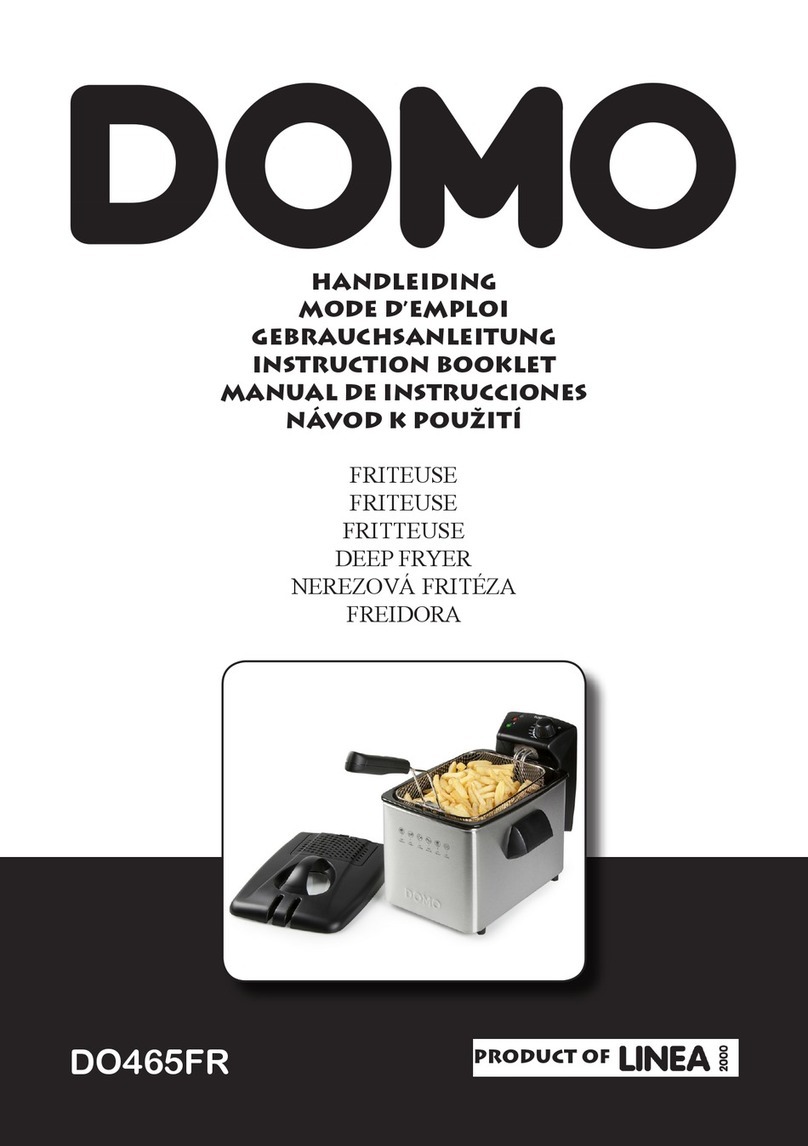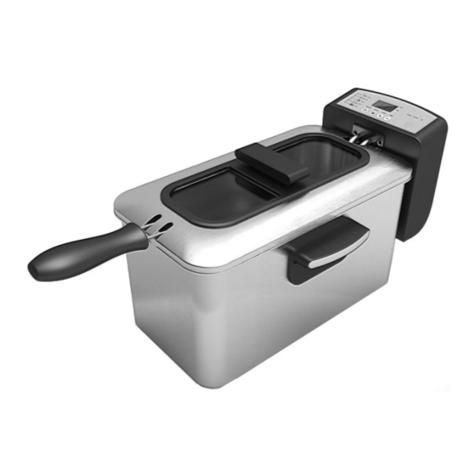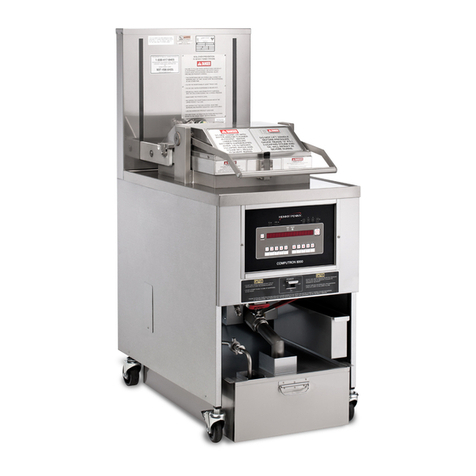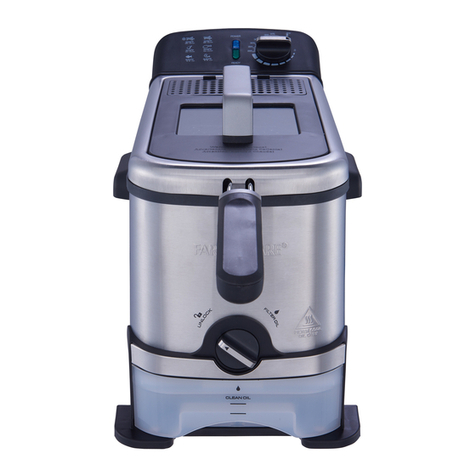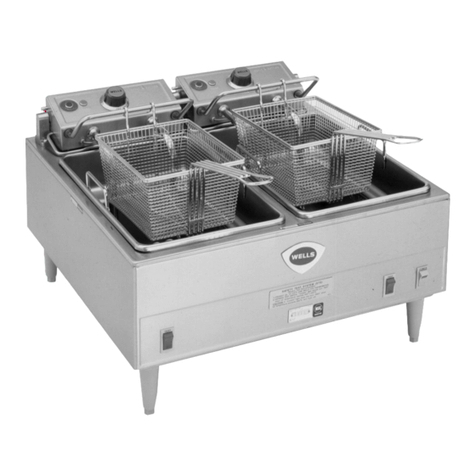4
A out use
The appliance is intended solely for household use
and must not be put to any other uses.
Use the appliance to prepare meals only. Do not
use the appliance to heat up the room in which it is
installed.
The appliance must not be operated empty. If the
appliance is switched on empty, the temperature
control will switch off the appliance automatically.
Turn the “Temperature" control knob to the OFF
position. Wait until the appliance has cooled down.
Only use the intended deep frying baskets.
The deep frying oil/fat will foam over if foodstuffs
are too wet or if excessive quantities are inserted.
Risk of urns!
Keep ventilation openings open (doors, extractor
hoods and windows).
Top up oil or fat as soon as it is below the minimum
level (bottom marking). Caution: there is a fire
risk if the oil/fat level should drop below the
bottom marking!
Switch off the appliance after use.
The door(s) of the base cabinet must be locked if
there are small children in your household. This
reduces the risk of burns.
Fire risk! Clean your appliance at regular intervals
and change the oil/fat regularly. Old/soiled fat must
be replaced if it becomes brown, has an unpleasant
smell and/or smokes prematurely (160-1 0°C). Old
oil/fat tends to foam over easily and has a lower
ignition temperature.
Built-in overheating protection prevents overheating
of the appliance and of surrounding kitchen
furniture.
In the event of malfunction, first check your house-
hold fuses. If the power supply is in proper working
order, but the appliance is still not functioning,
please inform your specialist dealer or your nearest
Gaggenau after-sales service.
Operating for the first time
Remove the packaging from the appliance and
dispose of it according to local regulations.
Be careful to remove all accessories from the
packaging. Keep packaging elements and plastic
bags away from children.
Check the appliance for transport damage before
installing it.
The appliance must be installed and connected by
an authorised specialist before operation. Before
operating the appliance for the first time, make
sure that the mains connection is in proper working
order.
The serial number of the appliance can be found on
the quality control slip which is included with these
instructions. This quality control slip should be kept,
for guarantee reasons, together with your operating
and assembly instructions.
Read through these instructions attentively before
operating your appliance for the first time.
Thoroughly clean the appliance and accessories
before using them for the first time. This will elimi-
nate any 'newness’ smells and soiling (see chapter
“Cleaning and care”).






